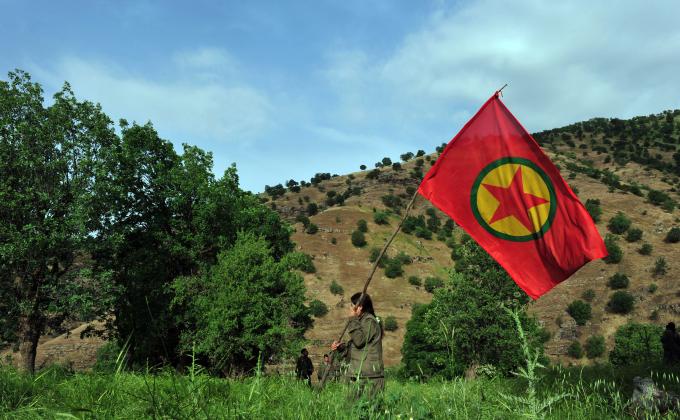To date, riots by the far right have impacted some 20 towns and cities across the UK. Hundreds have been arrested and there has been violence against properties and buildings, and also against people, particularly Muslims. All of this is seemingly a response to misinformation following a knife attack on a children’s dance class in the northern town of Southport in which three small girls were killed. Online rumours suggested the attacker was a Muslim asylum seeker and anti-Islam actors quickly mobilised. The violence has been ongoing.
The media has used different terms for what is taking place – extremism, riots, disorder, protest, but not the term ‘terrorism’. Britain’s former head of counter-terrorism Neil Basu, has however suggested that that is exactly what we need to label the worst of the violence. He is not alone. The former First Minister of Scotland Humza Yousaf called for the anti-Islam street movement the English Defence League (EDL) to be designated a terror group, following an attack on a mosque the day after the Southport stabbings. The police said attackers appeared to be EDL supporters. This analysis will consider whether what we are seeing should be considered terrorism.
Is this terrorism?
There are two issues with calls to use the term ‘terrorism’ for the British riots, and to proscribe the EDL related to the diversity of actors involved in the riots, and the contemporary status of the EDL.
Firstly, in the UK, groups are banned according to a set definition for terrorism, and it is one that encompasses the key features identified by academics: serious violence to person or property, intimidation of the public or influence of government, for an ideological cause. One of the key problems with calls to label the riot ‘terrorism’ is that there are diverse actors involved in both organising and participating in the violence. Some legitimately want to protest immigration, still others are there as hangers-on, drawn to the looting or criminality or ‘buzz’. And importantly, experts have also attested to the presence of known figures from far right groups. This means there are a number of different phenomena in one location: hate crime, extremism, and as Basu has suggested, in the worst incidents, potentially terrorism. A number of different charges could therefore be used to deal with offenders.
Secondly, specific reference to the EDL is misplaced, as this street protest movement no longer formally exists. The English Defence League was born in 2009 in response to Islamist Anjem Choudary’s al-Muhajiroun and its provocative anti-British protests, such as burning poppies, the symbol of remembrance for those who die in war. The EDL was never a formal organisation, and didn’t have a membership list. Calls to proscribe this ‘group’ are therefore redundant.
However, key figures from the EDL are still involved in the British far right, and the most visible of them is its co-founder, ‘Tommy Robinson’ aka Stephen Yaxley Lennon. In its early days the EDL drew thousands to the streets, in part due to his leadership. Robinson left the movement in 2013, first to join the anti-extremism think tank Quilliam, and then to become a self-declared ‘journalist’ dedicated again to anti-Islam activism. His popularity has only grown since then. He was able to bring thousands to ‘Free Speech’ demonstrations in his defence in central London following his arrest for contempt of court.
Robinson has also been influential in the recent violence, tweeting inflammatory videos from abroad. While calling on protestors not to target police, he has however also told British men to ready themselves for ‘British resistance’ (3 Aug). It is therefore not meaningless to discuss the EDL, as a blanket term for Robinson’s followers. Robinson has already been arrested under Schedule 7 of the Terrorism Act, and terrorism charges could be appropriate for clearly ideological leadership figures like him, following the features of the UK definition set out at the top of this section.
Far Right Terrorism: Changing the Narrative
Perhaps the most important contribution of both Basu and Yousaf however is to reframe our understanding of far-right violence, and to encourage society to take it more seriously. How we label violence matters. Whether an act of violence is hate, extremism or terrorism changes the legal responses, the likely jail term, and the perception of how seriously the state takes that violence.
Calls for anti-Islam violence to be considered terrorism are calls for it to be prioritised as a matter of national security. This is important for Muslim Britons, who have for years felt it is only their communities stigmatised as ‘terrorists’, while far right attackers have more often been described as mentally ill. For instance, in research on public attitudes with RUSI, we found the general public more likely to perceive far right violence as the result of ‘stupidity’, or as Keir Starmer has noted, ‘thuggery’, than as ideological, or ‘extremism’. It was in part the stigma of being ‘thugs’ that saw the demise of the EDL.
Things are improving. Increasingly in the UK, far right groups, such as National Action and The Base have been proscribed. Neil Basu has acknowledged that using the term ‘terrorism’ for the far right also has downsides – for instance it risks glorifying the far right. Robinson always wanted the anti-Islam movement to be taken seriously – using terrorism charges for the worst offences would signal this is coming to pass.
So too would using the term ‘extremism’. A new definition of extremism in March 2024 by the previous Conservative government of the UK emphasised this as ideology based on hatred, and arguably this is a more broadly fitting term, even if there is a gap in the legislation to permit prosecution for this.
Approach with Caution
Terrorism is a term that has suffered from past over-use, expanding to cover more and more offences. It should always be applied with caution. However, it is also a term that has been underused by the press and state for the far right. Perhaps it is inevitable a former counter-terrorism police lead would call for more charges of terrorism: when you are a hammer, you see nails. However, Neil Basu’s intervention is important in making us see far right violence for what it is – ideological. We must still distinguish between racism, hate crimes, extremism, and terrorism. But given the scale of the anti-Muslim violence, akin to pogroms, sweeping parts of the UK we need to be realistic about the different types of threat we currently face, one of which is far right terrorism; and we need to be more open to reading far right violence not as simple criminality, but as ideological.
This article represents the views of the author(s) solely. ICCT is an independent foundation, and takes no institutional positions on matters of policy unless clearly stated otherwise.
Photocredit: Sean Aidan Calderbank/Shutterstock






